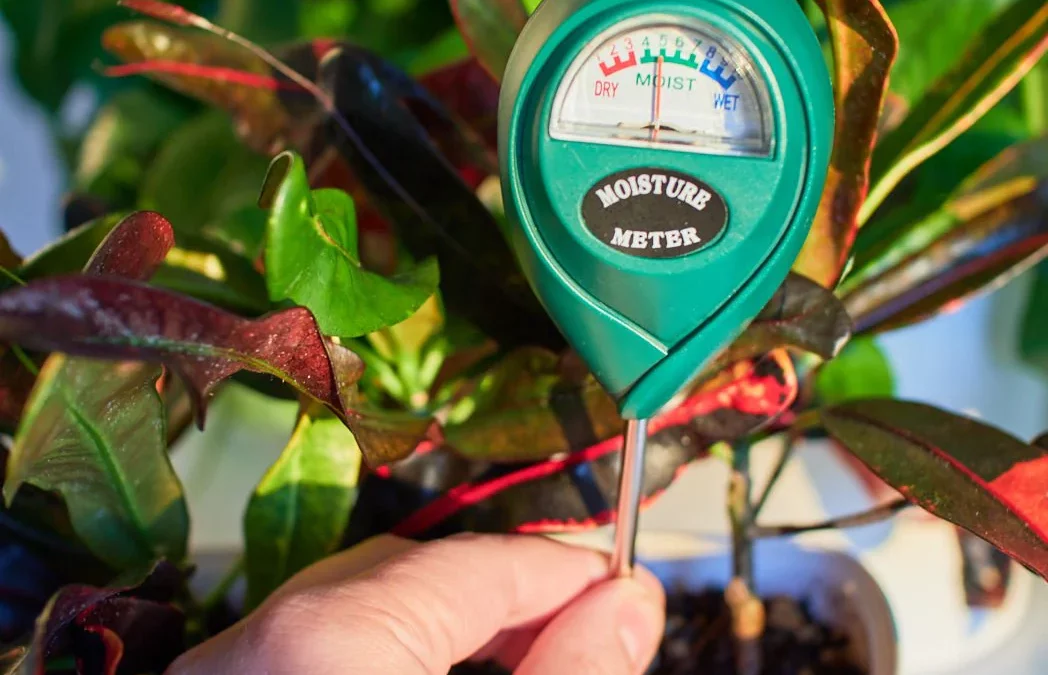Contents
- 1 How to Use a Soil Moisture Meter for Indoor Plants
How to Use a Soil Moisture Meter for Indoor Plants
Using a soil moisture meter can take the guesswork out of watering indoor plants. Overwatering is one of the most common reasons houseplants struggle or die, and a reliable moisture meter helps you provide the perfect amount of hydration every time. In this guide, you’ll learn what soil moisture meters are, how to use them, and how they can benefit your plant care routine.
What Is a Soil Moisture Meter?
A soil moisture meter is a simple tool designed to measure the level of moisture in your potting soil. It typically consists of a metal probe that you insert into the soil and a gauge or digital screen that shows how wet or dry the soil is.
Types of moisture meters:
- Analog: Needle-based display with a moisture level from dry to wet
- Digital: Numerical reading, often more precise
- Multi-function: May also read pH and light levels
These tools are especially helpful for beginners who are learning when and how much to water their indoor plants.
Benefits of Using a Moisture Meter
- Prevents overwatering and root rot
- Saves water by avoiding unnecessary watering
- Helps establish a consistent watering routine
- Ideal for moisture-sensitive plants like succulents and orchids
Moisture meters are especially useful in winter or low-light conditions when plants dry out more slowly.
Step-by-Step: How to Use a Soil Moisture Meter
1. Select the Right Pot and Soil
Use pots with drainage holes and well-draining soil to get accurate readings.
2. Insert the Probe Gently
Push the probe about halfway into the pot—roughly 2–3 inches deep for small pots, deeper for larger ones.
3. Wait for a Reading
Let the probe sit for 1–2 minutes. Analog meters will show a needle movement; digital meters will display a number.
4. Check the Moisture Level
- 1–3 = Dry
- 4–7 = Moist (ideal for most plants)
- 8–10 = Wet
Adjust your watering schedule based on this reading. Most indoor plants prefer to be watered when the reading is in the 3–4 range.
5. Clean and Store the Meter
Wipe the probe with a dry cloth after each use to prevent corrosion.
Common Mistakes to Avoid
- Leaving the meter in the soil: Only insert it when you need a reading.
- Inserting too close to the pot edge: This can give inaccurate results.
- Not testing in multiple spots: Especially for larger pots.
Best Soil Moisture Meters
- XLUX T10 Soil Moisture Sensor Meter
No battery needed, easy to read gauge - Sonkir Soil pH and Moisture Meter
3-in-1 meter for moisture, pH, and light
Related Articles
Learn More
For a detailed breakdown of how soil moisture affects plant health, check out this guide from Gardening Know How.
Final Thoughts on Using a Soil Moisture Meter
A soil moisture meter is one of the easiest and most affordable tools you can add to your indoor gardening setup. It gives you instant feedback on soil conditions and helps you avoid two of the biggest issues for houseplants: overwatering and underwatering.
Whether you’re caring for moisture-sensitive succulents or leafy tropicals, a moisture meter takes the guesswork out of watering. Pair it with good drainage and the right soil, and you’ll see healthier, more vibrant plants in no time.
If you’re trying to build a better plant care routine, this one simple tool can make a big difference. It empowers you to make smarter watering choices and reduces the stress of wondering whether your plant is getting too much or too little moisture. For any indoor gardener—especially beginners—a moisture meter is an essential ally. you can add to your indoor gardening setup. It gives you instant feedback on soil conditions and helps you avoid two of the biggest issues for houseplants: overwatering and underwatering.
Whether you’re caring for moisture-sensitive succulents or leafy tropicals, a moisture meter takes the guesswork out of watering. Pair it with good drainage and the right soil, and you’ll see healthier, more vibrant plants in no time.

